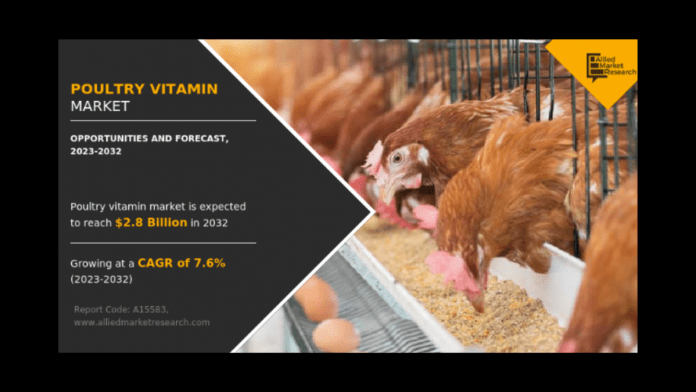News in Brief:
– Poultry vitamin market projects $2.8 billion growth by 2032, with key players navigating COVID-19 disruptions to ensure steady vitamin supply for optimal poultry health.
– Local farmers face challenges due to raw material price volatility, government regulations, and antibiotic use fluctuations, despite opportunities in the dominant chicken farming sector.
Recent report by Allied Market Research shows that the poultry industry stands resilient, projecting a remarkable growth of $2.8 billion with a CAGR of 7.6% by 2032 in the poultry vitamin market.
Despite the disruptions caused by COVID-19, key players such as Bluestar Adisseo Company, BASF SE, and Kemin Industries, Inc. have navigated supply chain complexities, ensuring a steady flow of essential vitamins for optimal poultry nutrition.
As the meat production and consumption surge globally, local farmers are poised to benefit from the economic growth, changes in lifestyle, and population growth driving the livestock revolution.
Vital role of poultry vitamins
Poultry vitamins, including A, D, E, and various B vitamins, are essential for the growth, development, and health of poultry species. They contribute to metabolism, bone development, immune function, and reproduction, crucial for sustaining the well-being of poultry.
While the poultry vitamin market anticipates significant growth, challenges loom for local farmers. Raw material price volatility, government regulations, and fluctuations in antibiotic use present hurdles. Stricter regulations may lead to formula adjustments and processing changes, impacting farmers’ efficiency and productivity. Below are some keypoints:
- Retinol dominates the vitamin segment, providing insights for farmers on prevalent market trends.
- Chicken farming remains a dominant sector, offering opportunities and challenges for local poultry farmers.
- The organic nature of poultry vitamins is poised to be the fastest-growing segment, aligning with evolving consumer preferences.
- North America leads in the market, presenting both challenges and advantages for local farmers.



